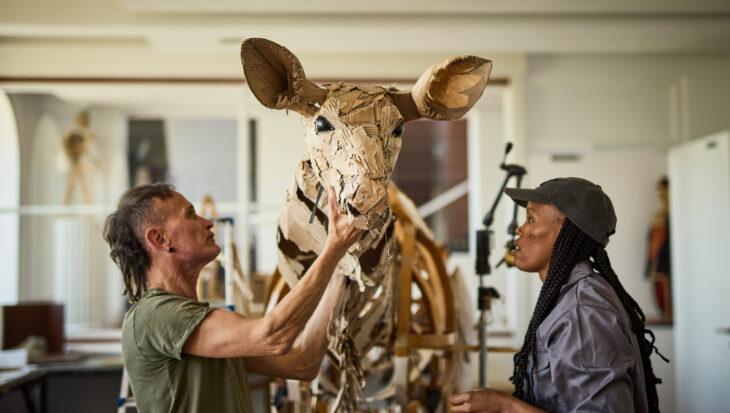‘The Herds’ will be arriving in London this Friday!
Have you heard? A breathtaking arts initiative, ‘The Herds’ will be arriving in London this Friday.
Posted 27 Jun 2025

Posted on the 17th July 2013
Animal Aid exposes the suffering of GM mice
The government has announced a sharp increase in the number of scientific ‘procedures’ conducted on animals in British labs last year. The jump is from 3.7 million in 2011 to 4.1 million. The dramatic rise comes despite a post-election pledge by the coalition government that it would work to reduce the total. The use of GM mice for disease research accounts for most of the increase, although experiments on non-human primates (up 22 per cent) and goats (up nearly 750 per cent) also contributed to the overall increase.
Official statements this week from Home Office Minister, Lord Taylor of Holbeach, and from the top official in the Home Office department that regulates animal research, are designed to give the impression that virtually all the increase in the use of GM mice relates to harmless breeding programmes. In fact, the creation of GM animals involves several invasive and painful procedures, including major surgery and castration. The subsequent breeding of ‘established colonies’ involves the manipulation of the reproductive cycles, behaviour and living conditions of millions of animals in British labs. A related category of genetically damaged mice are those with ‘harmful mutations’. Often the damage has been caused by deliberate chemical poisoning. The new figures show that the number of procedures involving these animals has increased by around 107,000.
As Animal Aid noted in its landmark report, Science Corrupted, published in February this year, most GM procedures are crude and unpredictable1. The intention is to create the equivalent of human diseases such as cancer, heart failure and dementia. But even though the mice endure a range of painful or distressing conditions, including seizures, multiple tumours and mental derangement, the results fall short on scientific grounds by being poor approximations of the human conditions.
In addition to the deliberately induced symptoms, some mice will face further torments by being subjected to cruel experiments. They might be poisoned, injected with acid, forced to inhale tobacco smoke, or given electric shocks.
Says Animal Aid Scientific Consultant, Dr Adrian Stallwood:
‘The government solemnly pledged soon after coming to office that it would reduce the number of animal experiments. Instead, we have now had three years of increases. A good deal of the rise relates to the use of GM mice, with the government falsely implying that much of this experimental work is pain-free. The other claim is that the benefits to human medicine are potentially immense. That is also false. The evidence, as set out in Animal Aid’s Science Corrupted report published earlier this year, shows that therapies that work effectively in GM mice “models” have gone on to fail decisively when administered to human patients.’
Have you heard? A breathtaking arts initiative, ‘The Herds’ will be arriving in London this Friday.
Posted 27 Jun 2025

As the greyhound racing industry releases its annual data on the number of dogs’ deaths, a raft of well-known names - alongside their canine friends - has called upon the Government to end greyhound racing....
Posted 26 Jun 2025
